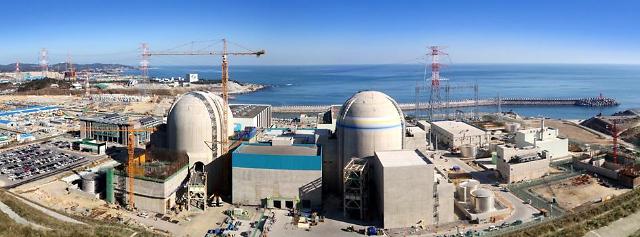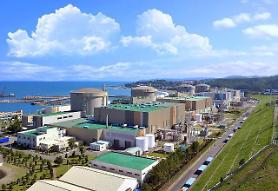
[Courtesy of Doosan Heavy Industries & Construction]
President Moon Jae-in has unveiled a new energy roadmap to replace fossil-fueled power plants with clean and renewable energy sources. The life cycle of existing reactors will not be extended to decrease the number of nuclear power plants from 24 to 14 in 2038. An old reactor in Gori near the southeastern port of Busan was shut down in June 2017.
By 2022, South Korea aims to train 1,300 experts in dismantling nuclear power plants by accumulating know-how with the dismantlement of Gori-1 that will begin in 2022. Policymakers hope manpower can be secured by transferring personnel in the construction and operation of nuclear power plants into decommissioning.
However, experts question the government's policy as it will take a long time to build related industrial infrastructure, saying South Korea has no experience in dismantling nuclear power plants.
A virtuous cycle will be created if the construction of nuclear power plants complements dismantlement, Korean Nuclear Society president Min Byung-joo said. "Since the two sectors are connected, a halt to the construction of nuclear power plants could also delay the development of technologies to dismantle nuclear power plants."
Even if South Korea has trained engineers and technical skills, experts say the market size is too small to create a value-added effect as expected by government officials.
"As about 40 percent of decommissioning is related to waste disposal, it is a low value-added industry," said Joo Han-kyu, a professor at Seoul National University's nuclear engineering department. "The market itself would be much smaller than the government expected because the global trend is to increase the life of nuclear power plants."
Government data released in 2018 showed that South Korea needs a total cost of some 100.6 trillion won to seal reactors and manage spent fuel and radioactive waste, but there has been no clear answer from policymakers to address concerns about nuclear waste and the management of spent fuel, which have been a stringent issue because Washington refused to revise a 2015 accord that has effectively restricted the development of reprocessing facilities to acquire enriched uranium as fuel.
For the dismantlement of nuclear power plants and the safe management of spent fuel and waste, South Korea has turned its eyes to Russian technology.
In November 2018, the state-run Korea Atomic Energy Research Institute (KAERI) said it would cooperate with TENEX and other Russian bodies to secure technology related to the decommissioning of nuclear and radiation hazardous facilities. TENEX is a key Russian organization in nuclear uranium conversion, enrichment services and spent fuel and radioactive waste management.
In January this year, the construction of additional facilities to store spent fuel from the operation of nuclear power plants won approval from the Nuclear Safety and Security Commission, nearly four years after operators applied for permission. The agency approved the storage of nuclear waste at a nuclear power plant in Wolseong, about 300 kilometers (186 miles) southeast of Seoul.
The first reactor at the plant in Wolseong, which supplies about five percent of South Korea's electricity, was put into operation in 1983. Initially, Korea Hydro & Nuclear Power (KHNP), the state-run operator of nuclear power plants, sought permission to build 14 modular air-cooled canister storage units, but only seven have been built.
In April 2016, KHNP sent an application for the construction of seven more, saying the plant in Wolseong would have no more space to store nuclear waste by the end of 2021, but approval has been delayed.
Used nuclear fuel is kept in onsite interim storage facilities. The storage consists of two phases: wet storage and dry storage. Spent fuel rods are first kept in storage pools of water, which provide cooling and shielding against radiation. After 7 to 10 years in wet storage, they can be transferred to dry storage.
Copyright ⓒ Aju Press All rights reserved.



